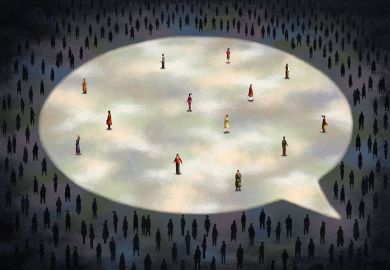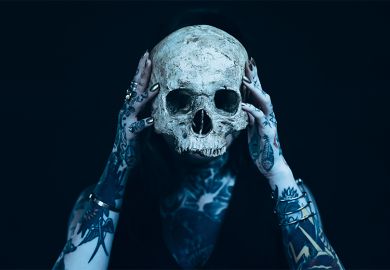Sylvia Plath is a poet who has been too often imprisoned in her own life. The shape of it seems - has been made into - a perfect, tragic arc of blazing fate. "I depend too desperately on getting my poems, my little glib poems, so neat, so small, accepted by The New Yorker ," she agonised to her journal in 1956. "I am a genius of a writer; I have it in me. I am writing the best poems of my life; they will make my name," she wrote to her mother in 1962, just five months before she took her own life. The years, the experiences, the work she accomplished in the time between these two statements become compressed into the kind of story you might find in one of the "slicks" - Mademoiselle , The Ladies' Home Journal - that the young Plath aspired to write for. But then the ending would have been different.
Or would it? For Plath's death at 30 made her a heroine, a figure of myth, a Joan of Arc going gladly to the fire. Subsequent events - the gradual release by her husband and executor, Ted Hughes, of her complete works, and especially Hughes's poetic account of their love affair, Birthday Letters - had the effect of enhancing her iconic status but obscuring the worth of her work. It is too easy to pick over her work for "clues" to the events from which they sprang; such clues can be said to exist, for any poet's work must come out of his or her experience and consciousness, however obscurely.
But, as Tim Kendall argues persuasively in his scholarly and accessible study, this approach greatly restricts the reader's appreciation of Plath's work. Her poetry asks more of us than merely to match it to the events of her life and admire her bravado. The reader must be willing to move beyond a notion that the work simply displays an artfully moulded version of her own psychodrama. Even the most sophisticated of readers have frequently been unable to manage this distinction. Seamus Heaney has identified a weakness in her work because of her focus on the self: "I do not suggest that the self is not the proper arena of poetry. But I believe that the greatest work occurs when a certain self-forgetfulness is attained, or at least a fullness of self-possession denied to Sylvia Plath." The Nazi imagery in "Daddy", Heaney has written, "overdraws its rights to our sympathy" - a criticism that makes the assumption that sympathy is what the poet seeks in the first place. Other critics have been more energetic in their search for links to her own history: Kendall notes an attempt to see a line in "Getting There" ("I shall bury the wounded like pupas") as "pupas = papas = the dead father".
Kendall does not deny that Plath creates a kind of mythology of repeated images and themes; but he allows these images and themes to speak for themselves. He rarely quotes from "supporting documents" such as the Journals or Letters Home , and his study is the better for that. His approach is broadly chronological, but it is a chronology of writing rather than of life. He accepts that some work comes directly from the events of her life: but he then works to prove that in such cases it is vastly weakened.
He identifies a point in her Journals when she writes of her desire to abandon the symbols with which she has propped up her work and look to "the real world". "This ambition marks not so much an abandonment of myth as a desire to conceal it 'behind' 'real situations'." But these "situations" cannot be limited to a single meaning for "although Plath's Ariel poems, in particular, record the death of a false or old self and the creation of a new self to replace it, they are poems of becoming rather than being. Their cycle of becoming - through death and rebirth - is inexorable, and must be constantly repeated, without ever settling on a stable and monolithic identity."
Kendall's argument moves in measured fashion towards its climax, an erudite discussion of her late, most difficult work. Along the way he deals as best he can with the difficulties that all Plath scholars face, such as the use of Nazi imagery. Kendall writes: "What appeals to Plath about the Jewish faith in the 20th century is its confirmation through sufferingI However inappropriate this identification may seem from orthodox theological perspectives, it epitomises the piranha religion of Ariel ..." You must take Plath on her own terms, or not at all.
Of poems such as "The Munich Mannequins", "Paralytic" and "Totem", all written in the month before her death, Kendall writes that they "represent the tiny visible portion of an otherwise submerged psychodrama". These are obscure works of mysterious power, in which it is impossible to detect literal meaning. They have the surreal edge of the de Chirico paintings that influenced earlier works such as "The Disquieting Muses"; yet they are less indebted and more themselves, and Kendall shows how they exist within a framework of imagery - hooks, eyes, eating, death and rebirth - that Plath has created over years of writing and which she can now hone to its barest essentials. He draws attention to her technique of highly compacted metaphor, tracing the metaphorical history, as it were, of a line such as "Dawn gilds the farmers like pigs" (from "Totem") until the reader can see its poetic - rather than personal - sources.
The reader may not always agree with Kendall's interpretations; but the resistance of a work of art to being pinned down in any way is one of the measures of its greatness. Kendall's study gives us a reminder we need - of the power of Plath's poetry and its ability to speak for itself.
Erica Wagner is literary editor, The Times , and the author of Ariel's Gift : Ted Hughes , Sylvia Plath , and the Story of Birthday Letters .
Sylvia Plath: A Critical Study
Author - Tim Kendall
ISBN - 0 571 19235 1
Publisher - Faber
Price - £9.99
Pages - 235



